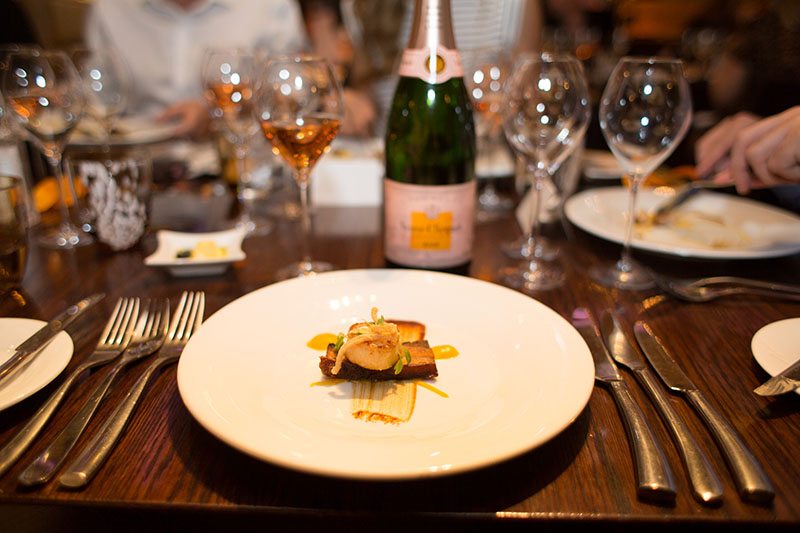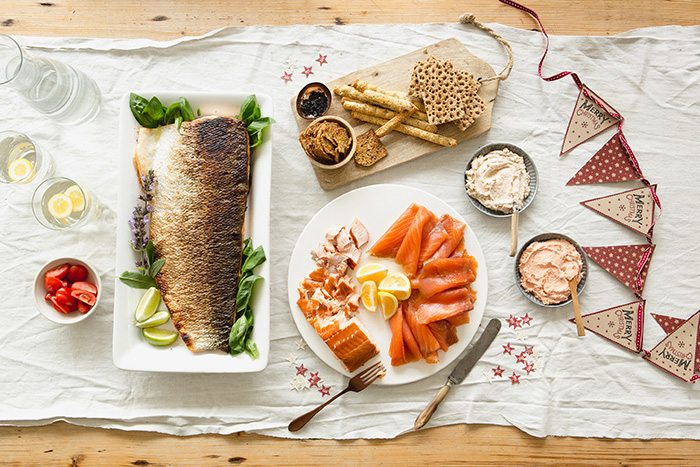What do you find most fascinating about Champagne?
That wine making in Champagne is a really tough job. You work on the edge of nature. It’s almost ridiculous that wine is produced in that region. The weather is not very nice. There is a lot of rain. You are not necessarily going to produce a lot of good grapes. It’s really hard work on the vineyards – more than most wine regions in the world. Also, to actually develop the skills to blend all these base wines (very mediocre still wines) into something goes into the bottle with yeast and in four years time develops to produce something as remarkable as Champagne is simply amazing. It’s the toughest wine making in the world.
Can you age Champagne?
We don’t recommend ageing non-vintage for a long time. It is different with vintage Champagne. Best way is in our own cellars before you disgorge (remove the yeast from it). It has got to retain the bubbles. That’s the role of the yeast. Has to continue to ferment to produce the bubbles. Veuve Clicquot has a very strong reliance on vintages. It was one of the first houses to produce vintage Champagne. We have Champagne from the 70s and 80s. When they’ve been ageing in the cellars for 10 to 20 years they start to develop a very different expression from original releases. They develop a lot of complexity and toastiness. It’s a very different wine.
What is your most memorable Champagne moment?
I’m lucky to have the privilege of a lot of memorable Champagne moments and experiences but one of the most memorable was a couple of years ago when divers discovered a collection of old bottles of Champagne in a shipwreck in the Baltic Sea. Some of the bottles were Veuve Clicquot, identified by the symbol of the anchor on the cork. After checking and investigating it transpired the bottles were from the 1840s. They had been lying in the sea for 150 years. The Baltic Sea is a very calm sea and consistent temperature of about six degrees Celsius. The Champagne had almost stopped ageing and it is remarkable that most of the bottles are still drinkable. Later there was an auction where Veuve Clicquot also brought out a lot of its older vintages from the cellars which were extraordinary bottles.
Champagne is great with oysters and caviar but when it comes to wine and food matching it is often not the obvious choice for a sit down dinner yet at the recent Clicquot in the Snow degustation dinner at The Hilton in Queenstown every dish was matched with Champagne. What foods match best with bubbles?
It is still a territory that not many people know and an area we try to educate people about, especially around vintages of Champagne. Champagne is really suitable to drink throughout a dinner occasion from the aperitif to the very end across lots of different types of food. Chicken usually combines well with a rose. Seafood is usually a good match. A lot of Asian cuisines work well – Japanese and Chinese.
Do New Zealand and Australian Champagne drinking habits differ much from the French?
France is still the biggest Champagne market in the world. You have got Champagne across many different price points …therefore the market is very large and people drink on many occasions. Elsewhere in Europe as well as Australia and New Zealand, overall when compared to France, the number of occasions that people drink Champagne are not as many even though it’s growing really fast. The Champagne market in Australasia is one of the fastest growing categories in the drinks market. The past five years have seen double-digit growth across the category in Australia and New Zealand even though the market is still quite seasonal and very skewed to the end of the year. Classic Champagne moments like Christmas and celebrating New Year. It is something we try to de-seasonalise by creating Champagne occasions. Clicquot in the Snow festival and the polo are good examples of that.
In your opinion when is the best time to drink Champagne?
When you look at when people drink Champagne it’s one of the few drinks that people drink when they’re happy. It doesn’t have to be a big celebration. Just happy moments throughout the year. Champagne can add a little bit of sparkle to the moment.






